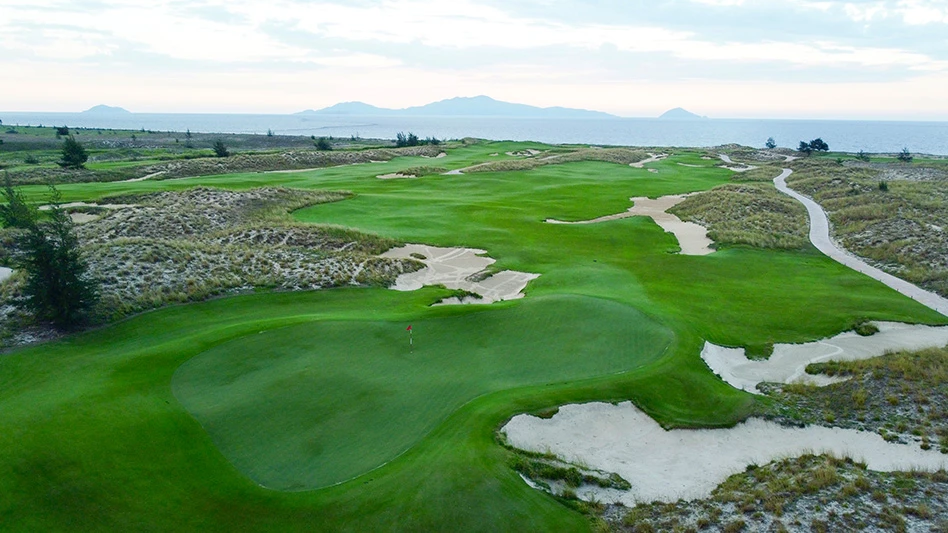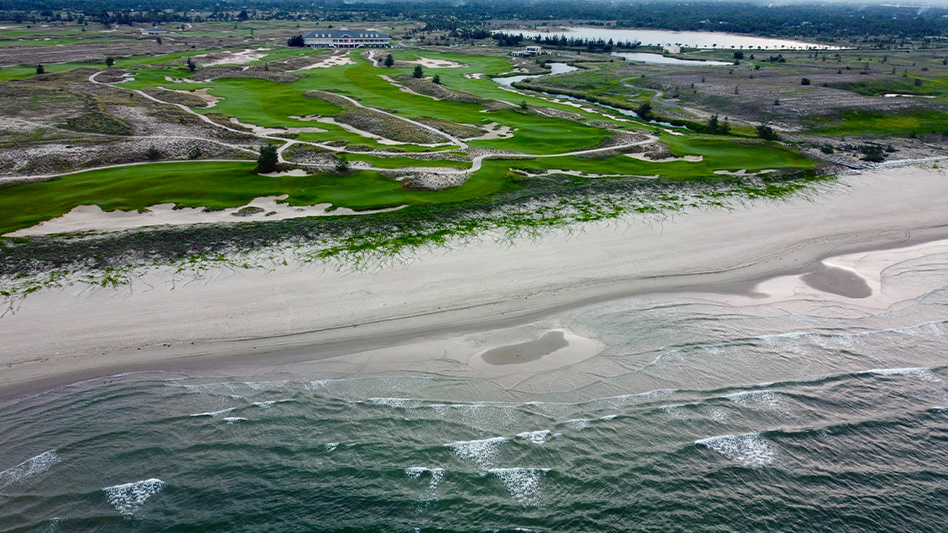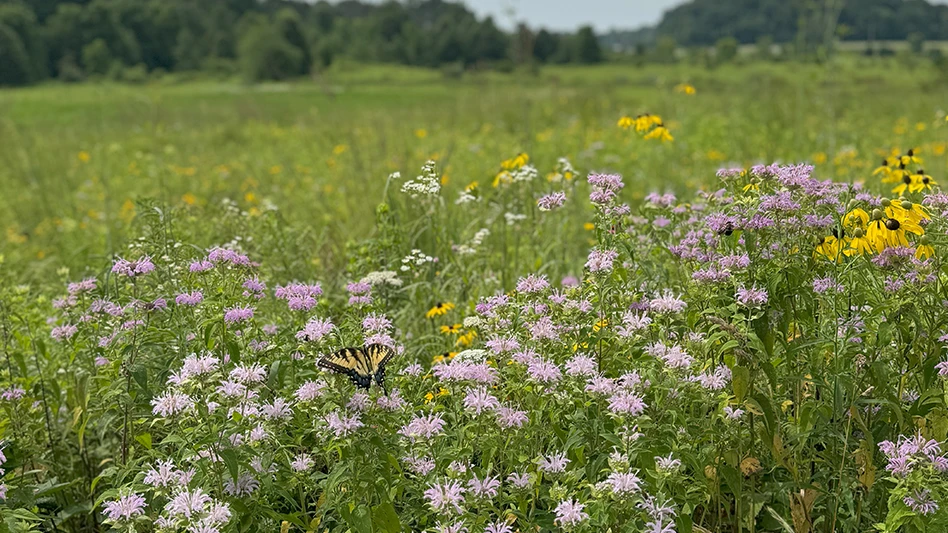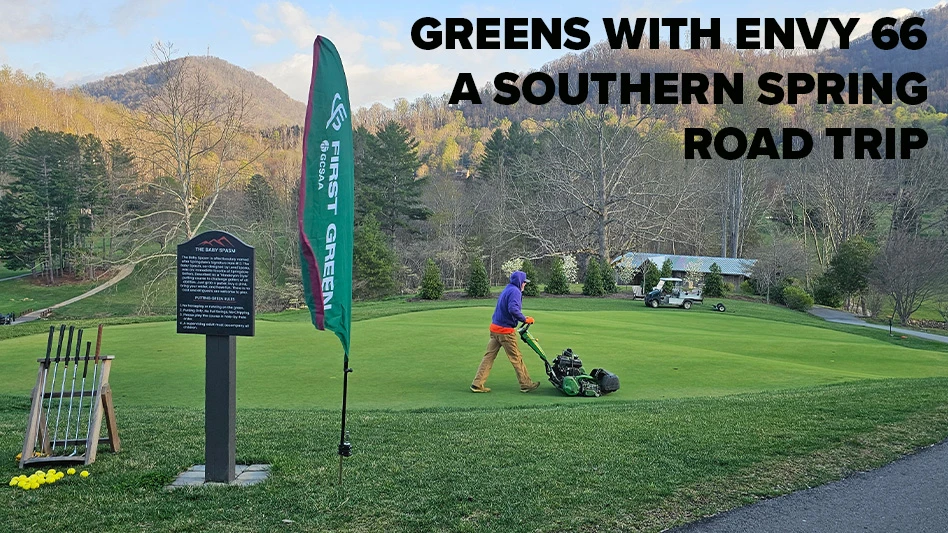
Courtesy of Hoiana Shores Golf Club (2)
At every step along their development path, the directors and staff at Hoiana Shores Golf Club in Hoi An, Vietnam, have kept their sustainability goals simple and consistent. They were determined to be the first course in Southeast Asia to achieve GEO Certified Development status, a commitment that influenced nearly every aspect of the resort’s design and construction approaches. They were also determined to create and maintain the country’s only true links.
Hoiana Shores opened for play in May 2020 and was certified before the end of that year as the first sustainable golf development in Southeast Asia. Five years later, it remains the only GEO Certified Development in not only the country but the entire region.
Laid out by Robert Trent Jones II along the beach south of Danang, the course is in full view of the magnificent Cham Islands and is the only course in the country that plays like a links, a fact closely tied to the resort’s determination to operate sustainably. The golf operation has also continued with its long-term commitment to sustainability. Five years since opening, it is now seeking further recognition with GEO for its ongoing sustainable management and operational practices.
“The commitment to sustainability is interesting and a bit daunting, as once you undertake the challenge, there is no end point,” said Dr. Aylwin Tai, the resort’s chief strategies officer. “We have already done so much here to reduce waste, to expand native plantings and natural areas, to hire local and restore native habitats. But we are never ‘finished’ with anything! There is always an operational process to improve or make more efficient. There is always a chemical or fertilizer we can work to rely upon less. There is always a best practice we are working to make better.
“In a way, it’s exhilarating to continually improve. In another, it’s very intimidating because we humans — and the Vietnamese people especially — tend to be extremely goal-oriented. Full credit to golf course and clubhouse teams, who have worked tirelessly together to realize all these extraordinary results.”
This assessment rings true with Sam Thomas, GEO Sustainable Golf Foundation’s developments lead.
“We work very hard with individual facilities, to get them on the ‘Sustainable Golf Pathway,’ and keep them on them on that path,” said Thomas, whose non-profit foundation is based in North Berwick, Scotland. “It’s a mindset that should inform all corners of design and future course operations, along with better resource management and efficiency, which leads to better profit margins. We work with courses in 75 different countries. We’ve been hugely impressed with the commitment on display at Hoiana Shores, who started down the pathway eight years ago. They have built a such a productive team.”
And, of course, there are concrete goals to be met. As Thomas, Tai and his staff understand, this next phase — seeking and maintaining GEO Certified Facility status — brings with it a three-year commitment. Properties seeking recertification must meet the international standards and improvement targets they set, as interpreted by the independent verifier whose inspections may result in certification. The Foundation does not certify anything; that job is reserved for these objective third parties.
And so, Southeast Asia’s only verifiably sustainable golf development is gearing up to prove itself all over again for the next stage of its golfing life. GEO and Hoiana Shores have targeted June for this next certification step.
“We have accomplished and maintained so much in five years, the course staff here feels like there’s nothing we cannot do,” Tai said. “We’re all very proud of them, of course, especially head course superintendent Long Nguyen. But we’re also thoroughly impressed.”

Sustainability in the golf context isn’t the mere building and managing of a course in harmony with its natural surroundings, though that is a big part of it. But the sustainable golf certification places as much emphasis on resource management and a facility’s productive relationship with the local community.
In all three respects, the development of Hoiana Shores illustrates its commitment to sustainable golf from the very start.
For example, there is plenty of coastline in Vietnam, and several golf courses have been built alongside it. The developers at Hoiana — an integrated resort of which HSGC is one component — chose a stretch of land that required the immediate and substantial remediation of a former shrimp farm. In doing so, the developers rendered the property more sustainable before the golf course and resort were anywhere near completed.
In committing to the links model, the team at Robert Trent Jones II recommended fairways turfed with a locally grown Zeon Zoysiagrass, a specialist strain that delivers the bounce and roll that links landforms require. Critically, Zeon also uses a fraction of the water used by Bermudagrass, the high-performance fairway turf deployed at most courses in steamy Vietnam and Southeast Asia.
Even so, due to the site’s high winds and low-profile course design, HSGC staff must remain mindful of irrigation head placement, nozzle type and arc.
“We are assessing this every day to ensure we are minimizing water waste and the water over-throwing into the native rough,” said Nguyen, who started as the course superintendent in 2022. “We are using the Rain Bird IC system to help us keep a close eye on the water amounts used — and the individual head control allows us to be very precise about water use, especially in certain wind conditions.”
Sand is arguably the most important physical resource on any golf course, especially a links course. Yet not all beach sand is angular enough to be deployed in the top-dressing of greens and fairways, for instance, or the filling of bunkers. The native sand at Hoiana Shores is well suited to these agronomic tasks, and all of HSGC’s sand needs are met on site. This sustainable good fortune eliminates the expense and fuel-use associated with delivering this critical resource.
Hoiana Shores’ relationship with the local community has always been robust. From Day 1, it has staffed the course maintenance and clubhouse teams entirely with workers from Greater Danang. Yet HSGC’s interdependence with the community goes deeper than employment. Hoiana Shores has hosted several charity events to raise money for local causes. Because regular turfgrass maintenance practices produce a green waste, or compost, staff are encouraged help themselves — to grow plants and food at home or contribute to other agricultural projects in their local neighborhoods.
The maintenance team also regularly takes part in local beach clean-ups, using course maintenance vehicles to help collect waste material and remove it from shore areas. Any larger pieces of driftwood are brought to the golf course where they are converted into course benches, aesthetic sculpture, or man-made habitats for smaller creatures living in native out-of-play areas.
“Year on year since opening, we are seeing an increase in the diversity and types of wildlife using the course as their home,” Nguyen said. “We have a native dune scrub habitat unique to the region, compared to the non-native Casurina plantation and agriculture fields around us. This enables us to attract native wildlife and provide a valuable and increasingly rare habitat for them, here in Hoi An. We record when and where they were all spotted for future reference. The 2nd tee area has been a popular spot for nesting birds in 2024.”
For all its sustainability credentials, the most impressive thing about Hoiana Shores GC might be its simple survival. The HSGC grand opening nearly coincided with the COVID-19 pandemic, which resulted in a country-wide lockdown. Operations were maintained on a shoestring for nearly four years. Not until 2024 did domestic and regional tourism show clear signs of recovery.
“Of course, every golf operation in Vietnam — every business in the country — dealt with the same type of hardship,” said HSGC clubhouse manager Sinh Tran Thi, who’s worked at Hoiana Shores since 2018. “But not every business was also trying to survive while maintaining best sustainability practices. We do feel as though our experience has strengthened us — made the team and our teamwork far more resourceful.”
That’s good, because the GEO Sustainable Golf Foundation, in league with its independent verifiers, has spelled out a series of specific next steps for the team at Hoiana Shores. Meeting some of these benchmarks will enable their next step: operations certification by June. Clearing other thresholds will support continued certifications in 2028, 2031 and beyond.
High on the near-term list is the upgrade of bulk materials storage, those areas of a maintenance complex where sand and green waste are stored. At HSGC, they have never been big enough, according to GEO’s last recommendations report, issued in October 2024. An expansion is planned.
HSGC also took the initiative to purchase and install a bank of solar-energy panels in 2024. Next step: working to get them connected to the resort-wide power grid.
One can begin to see what Tai is talking about: Much has been accomplished. But the list of sustainable improvements never ends.
Vehicle-washdown protocols at Hoiana Shores are due for new investments and upgrades, among them installation of a closed-loop water system, including a heavy-duty drain sump to better capture clippings and washdown waste. It’s also been recommended that HSGC more aggressively invest and phase in electric and hybrid vehicles as they become available in Vietnam. Of course, any transition away from fossil fuels may mean infrastructural investment in the electric supply systems in the maintenance buildings.
On course, Hoiana Shores plans to work with the team at Robert Trent Jones II to combat wind erosion on several holes. There are several habitat management projects, as well. Nguyen and his team have already embarked on a study of golfer traffic patterns on and around fairways, and also on the walk-off areas beside tees and greens. These patterns might present opportunities for turfgrass removal.
“There is currently a plan to systematically thin out parts of the native rough areas,” Nguyen said. “Over time, they have not been maintained, of course, but patches have become overgrown with invasive plants and turfgrass encroachment. Some of this is partly due to irrigation overspray; some is seed blow into open sandy areas.
“We anticipated this would be an ongoing issue. Still, there is no formalized approach to address it.”
GEO’s October 2024 status report recommended the identification, mapping and prioritizing of all these ‘densified’ rough areas. “The backs of tees aren’t as important as fairway landing areas, for example,” Nguyen said. “We really need to gain an understanding for the best times of year to carry out this sort of work, to avoid impacts on nesting birds and foraging.”
Latest from Golf Course Industry
- Graze, Invited partner for autonomous mowing launch at Gleneagles CC
- New grasses up north?
- From the publisher’s pen: Technology diffusion and turf
- Applications open for 2025 Syngenta Business Institute
- Smart Greens Episode 1: Welcome to the digital agronomy era
- PBI-Gordon promotes Jeff Marvin
- USGA investing $1 million into Western Pennsylvania public golf
- KemperSports taps new strategy EVP





